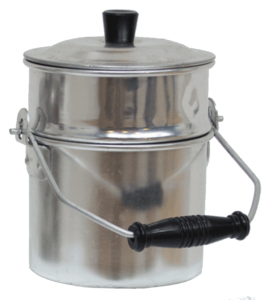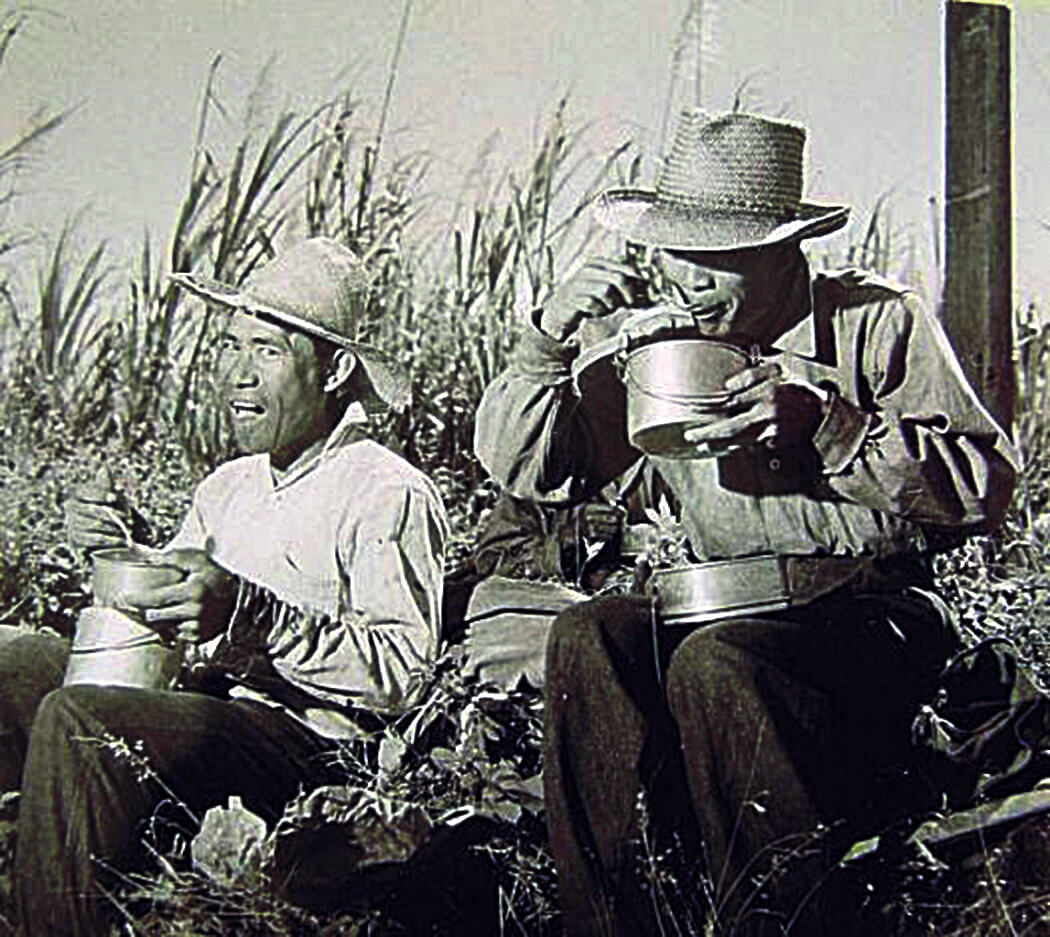
Photo courtesy Hawai‘i State Archives

Kau Kau means “eat” in Hawaiian. Plantation workers carried their lunch into the sugarcane or pineapple plantation fields in a double-decker “tin” with an arched wooden handle. In the past, the tins were made of aluminum. Today, they are made of stainless steel.

Kau kau tin is what the Sakadas (plantation workers) packed their lunches in. Have you ever wondered what’s in their kau kau tin? I have been told by the early plantation workers that what’s in their kau kau tin normally reveals not just who they are culturally but what regions in the Philippines the Sakada came from. Normally, the plantation workers will place the rice at the first layer of kau kau tin—and the top layer will consist of their favorite dish, such as fried akule fish, maybe a few vienna sausages, or spam, and not to mention paria (bittermelon) leaves salad with tomato and garnished with patis (fish sauce).
At lunchtime in the plantation fields, these Sakadas will join their fellow plantation coworkers—Portuguese, Puerto Rican, Japanese, Chinese, Hawaiians—and everyone would proudly open their kau kau tins and each would share their dish for everyone to enjoy. What is so amazing about each tin-held dishes brought by different ethnic groups in the fields “reveals their owner’s character and culture”—which helped create the true flavor of Hawai‘i and more specifically Maui a special place to live. The sharing of food during the early days of plantation operation was definitely the hallmark that helped cultures once foreign to each other to become one community that truly loves and genuinely cares for one another.

join their fellow plantation coworkers—Portuguese, Puerto Rican, Japanese, Chinese, Hawaii-ans—and everyone would proudly open their kau kau tins and each would share their dish for everyone to enjoy.
So, kau kau tin is a symbol and a historical reminder of the Sakadas’ aspirations and sacrifices. The next generation needs to perpetuate the culture with humility and with passion to lift each other up. Let’s keep this culture alive and let’s not stop sharing our rich culture and the ono food in our double-decker kau kau tins.
Vince Bagoyo, Jr. is the President/Owner of V. Bagoyo Development Group. He was graduated from Chaminade University (Bachelor of Arts in Political Science and Business Administration) and California State University, Long Beach (Masters of Public Administration, Government Finance). His various government positions include Councilman (1991 to 1992); Director, Department of Housing and Human Concerns; and Director, Department of Water Supply. Bagoyo was previously President of Lāna‘i Holdings and Water Company and Vice President of Lāna‘i Company. He is currently Vice President of the Maui Memorial Medical Center Foundation and was Chairperson of the Maui Filipino Centennial Celebration Coordinating Council. His wife Jennifer is an RN at Maui Memorial Medical Center.
